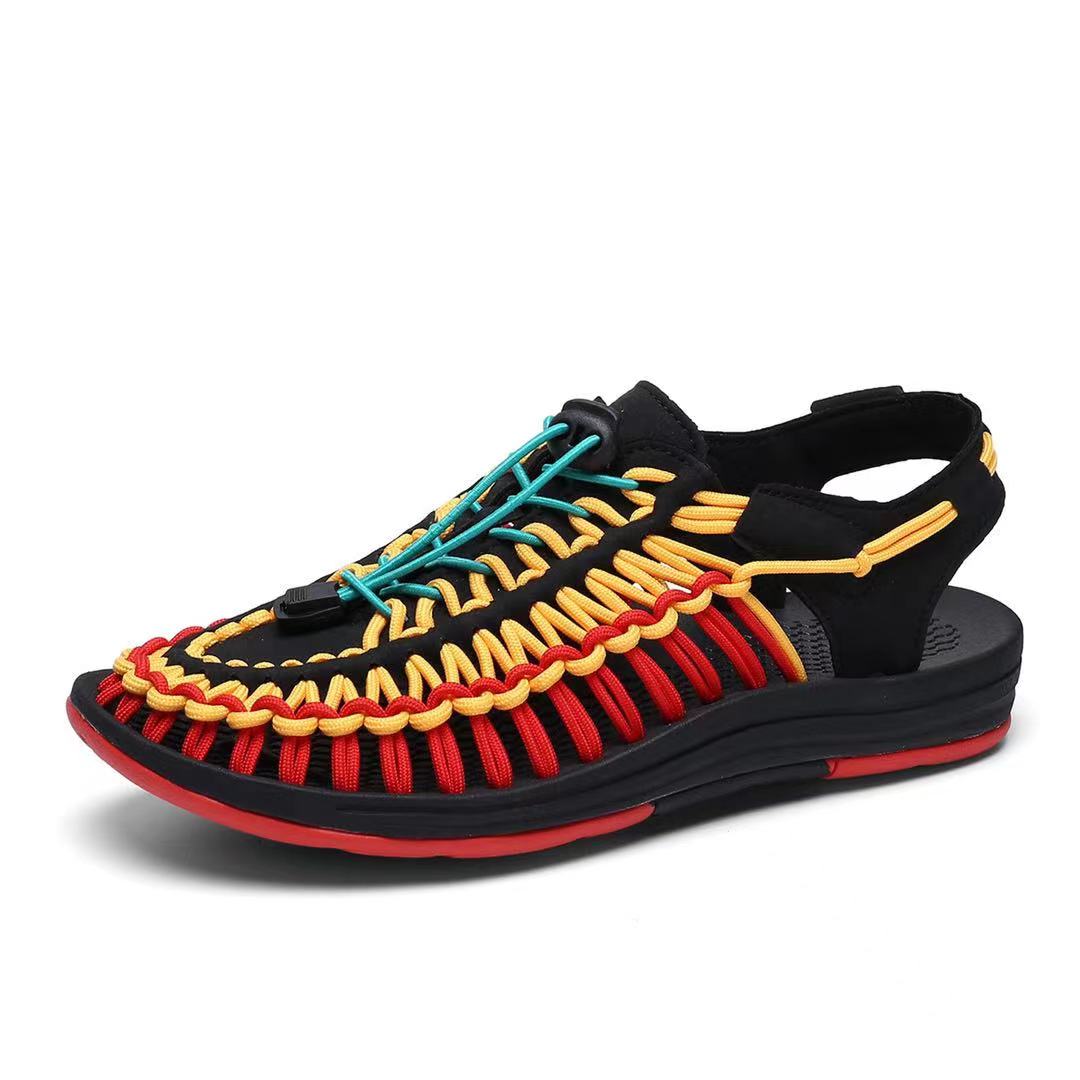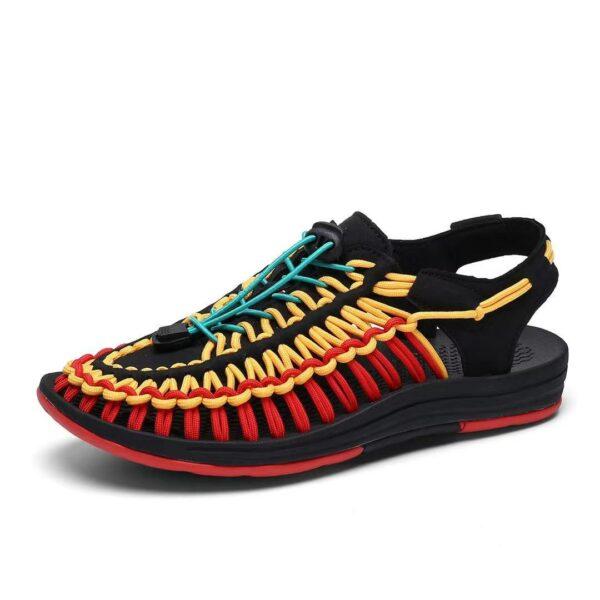The outsole materials in beach slipper sandals play a crucial role in determining traction and durability on sandy and wet surfaces.
The choice of outsole material can significantly affect how well the sandals perform in these conditions:
-
Rubber Outsoles: Rubber is a common choice for beach slipper sandals. It offers good traction on various surfaces, including sand. The rubber outsole typically has textured patterns or lugs that help grip the sand, preventing slips. Rubber is also durable and resistant to wear, making it suitable for prolonged use in sandy and wet environments.
-
EVA (Ethylene-Vinyl Acetate) Outsoles: EVA is lightweight and comfortable, but its traction on sandy and wet surfaces may not be as reliable as rubber. However, some EVA outsoles are designed with patterned treads that can provide decent grip on sand and prevent slippage. EVA outsoles are known for their cushioning and shock-absorbing properties, which enhance comfort.
-
Jute Outsoles: Jute is a traditional material used for espadrilles and beach slipper sandals. While jute outsoles may not provide as much traction on wet or slippery surfaces, they are well-suited for sandy beaches and offer a unique, natural look. Jute outsoles tend to be lightweight and flexible.
-
Cork Outsoles: Cork is another natural material used for outsoles. While it may not offer the best traction on wet surfaces, it can provide decent grip on sand. Cork is known for its comfort and cushioning properties, making it a comfortable choice for beachwear.
-
Synthetic Outsoles: Some beach slipper sandals may feature synthetic outsoles designed with textured patterns or water-channeling grooves to improve traction on wet surfaces. The performance of synthetic outsoles can vary depending on the design and materials used.
-
Hybrid Outsoles: Some beach slipper sandals incorporate a combination of rubber or synthetic materials with cork or jute to provide a balance between traction and comfort. These hybrid outsoles aim to offer both grip and cushioning.
In summary, rubber outsoles are generally the most reliable choice for providing good traction and durability on sandy and wet surfaces, making them ideal for beach slipper sandals. EVA, jute, cork, and synthetic outsoles have their advantages but may not perform as well in all conditions. The specific design of the outsole, including the patterns and grooves, can also influence its performance on different surfaces. When choosing beach slipper sandals, consider the intended use, the type of terrain you'll encounter, and the level of traction needed for a comfortable and safe experience.
What are the most common materials used for the knit upper of these summer fashion beach slipper sandals?
The most common materials used for the knit upper of summer fashion beach slipper sandals can vary, but they typically include:
-
Textile Yarns: These are made from natural or synthetic fibers and are commonly used for knitting the upper of beach slipper sandals. Natural fibers like cotton or linen are breathable and comfortable in warm weather, while synthetic fibers such as polyester or nylon can provide durability and moisture-wicking properties.
-
Elastic Materials: Some knit uppers incorporate elastic materials, such as elastane or spandex, to provide a stretchy and snug fit. This helps the sandals conform to the shape of the foot and prevents them from slipping off during wear.
-
Mesh Fabric: Mesh is a type of knit fabric that is highly breathable and allows air to circulate around the foot, Summer Fashion Knit Upper Breather Beach Slipper Sandals making it a great choice for summer footwear. It's often used in the upper of sandals to enhance ventilation.
-
Recycled or Eco-Friendly Yarns: In line with sustainable fashion trends, some brands use recycled materials, including recycled polyester or other eco-friendly yarns, for the knit upper. This reduces the environmental impact of production.
-
Cotton Blends: Blending cotton with other fibers, such as polyester, can enhance the durability and moisture-wicking properties of the knit upper. Cotton blends are often used to strike a balance between comfort and performance.
-
Bamboo Yarn: Bamboo is an eco-friendly material known for its natural breathability and moisture-wicking properties. Some knit uppers are made from bamboo yarn, which is especially comfortable in hot weather.
-
Tencel or Lyocell: Tencel or Lyocell is a sustainable fiber derived from wood pulp. It is used for its softness, breathability, and moisture management properties, making it a good choice for summer footwear.
-
Lycra: Lycra is a stretchy material that adds elasticity to the knit upper, ensuring a secure and comfortable fit. It allows the sandals to flex with the movement of the foot.
-
Microfiber Yarns: Microfiber yarns are fine, lightweight, and often used for their softness and moisture-wicking capabilities. They can be used in the knit upper to provide comfort and keep the foot dry.
-
Acrylic Yarns: Acrylic is a synthetic yarn known for its durability and resistance to fading. It can be used in knit uppers to maintain color vibrancy and shape.
The choice of material for the knit upper depends on factors like comfort, breathability, durability, and style preferences. Each material has its unique properties, and brands often select a combination of materials to achieve the desired balance between these factors while providing a fashionable and functional knit upper for summer fashion beach slipper sandals.




